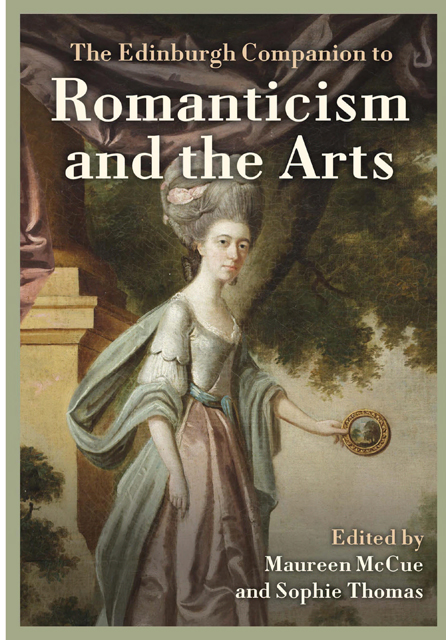17 - Mired in Print: Romantic Writers and Caricature
Published online by Cambridge University Press: 25 April 2023
Summary
The aim of this chapter is to present a new perspective on the Romantic-era visual portrayal of writers and writing. Instead of focusing on the familiar genre of the individual literary portrait and its static iconography of authorship (the carefully placed pen and book, the inspired or ruminative expression, the classical or pastoral setting), this chapter turns to the rumbustious imagery of caricature to locate a more dynamic and collective picture of literary print culture in action. While Georgian caricature’s emphasis on the hostile material conditions of writing undermined the Romantic cult of genius and celebrity, it did so by illuminating the matrices and networks of print within which authors worked, flourished and failed. Caricature provides a ‘fuller picture’ of the complex cultural interactions between literary, commercial and political forces which remained wholly outside the visual conventions of portraiture. In this sense, visual satire opens a unique window onto the ‘actors, groupings, assemblies, and networks’ that Rita Felski defines as the determining material and ideological contexts for works of art (2015, 11).
It could, of course, be argued with some justification that the whole point of a Romantic literary portrait was, in David Higgins’s words, to make the writer ‘stand out from the crowd’ and ‘obscure’ the troubling realities of the marketplace (2005, 5). Perhaps the most pressing case of this exceptionalism and idealisation is Keats, the quintessential poet’s poet who faced an uphill battle against slender means, hostile reviews and snobbish anti-cockneyism. Portraits of Keats show his visionary gaze eyeing up the prize of future fame and his body secluded from the worldly distractions he has transcended. Joseph Severn’s Keats Reading at Wentworth House (fig. 17.1) is a good example of what Sarah Wootton calls a ‘utopia of literary living’ (2006, 3). For Margaret D. Stetz, the ‘look of heightened spirituality, thought, and intensity’ is a guarantee that ‘that there was a creative spark firing the face from within’ (2007, 19). If the generic aim of a portrait was to flatter the sitter, the job of the literary portrait was to confirm the ideal of the autonomous genius (West 2004, 87–93). The image of the writer in both paintings and frontispieces to books signified unique ownership over the text, without any reference to the multiple agents (patron, publisher, editor, printer, artist, engraver, binder, bookseller) who actually produced the material object (Calé 2019, passim).
- Type
- Chapter
- Information
- The Edinburgh Companion to Romanticism and the Arts , pp. 313 - 334Publisher: Edinburgh University PressPrint publication year: 2022



